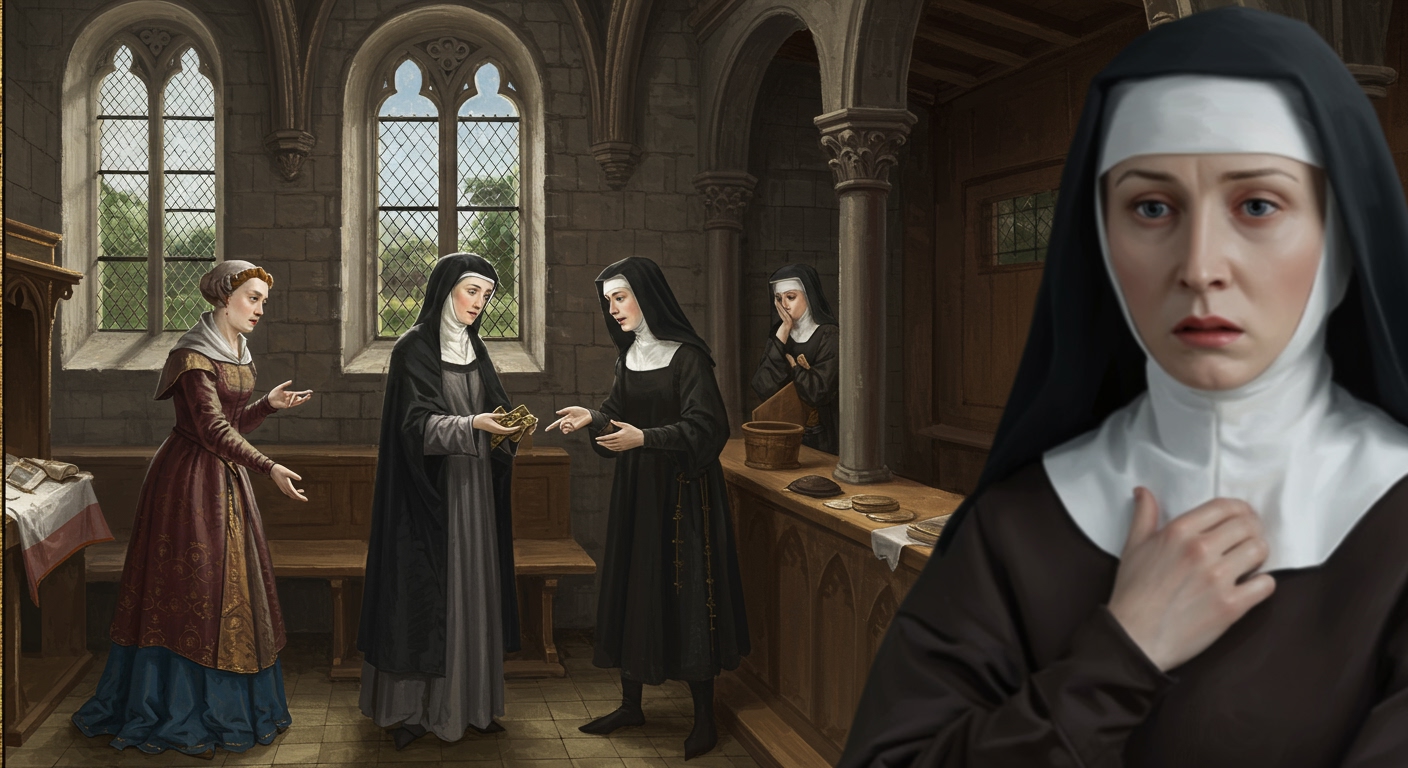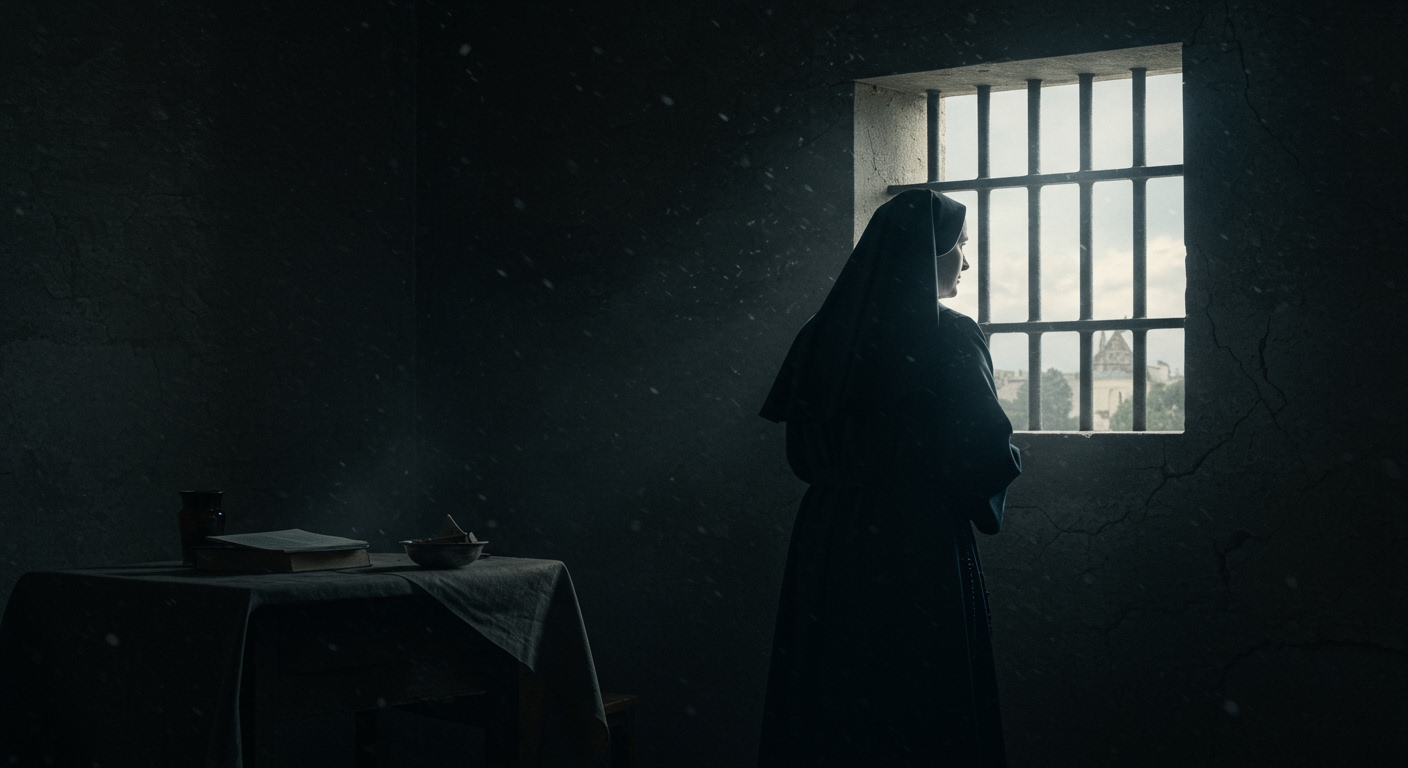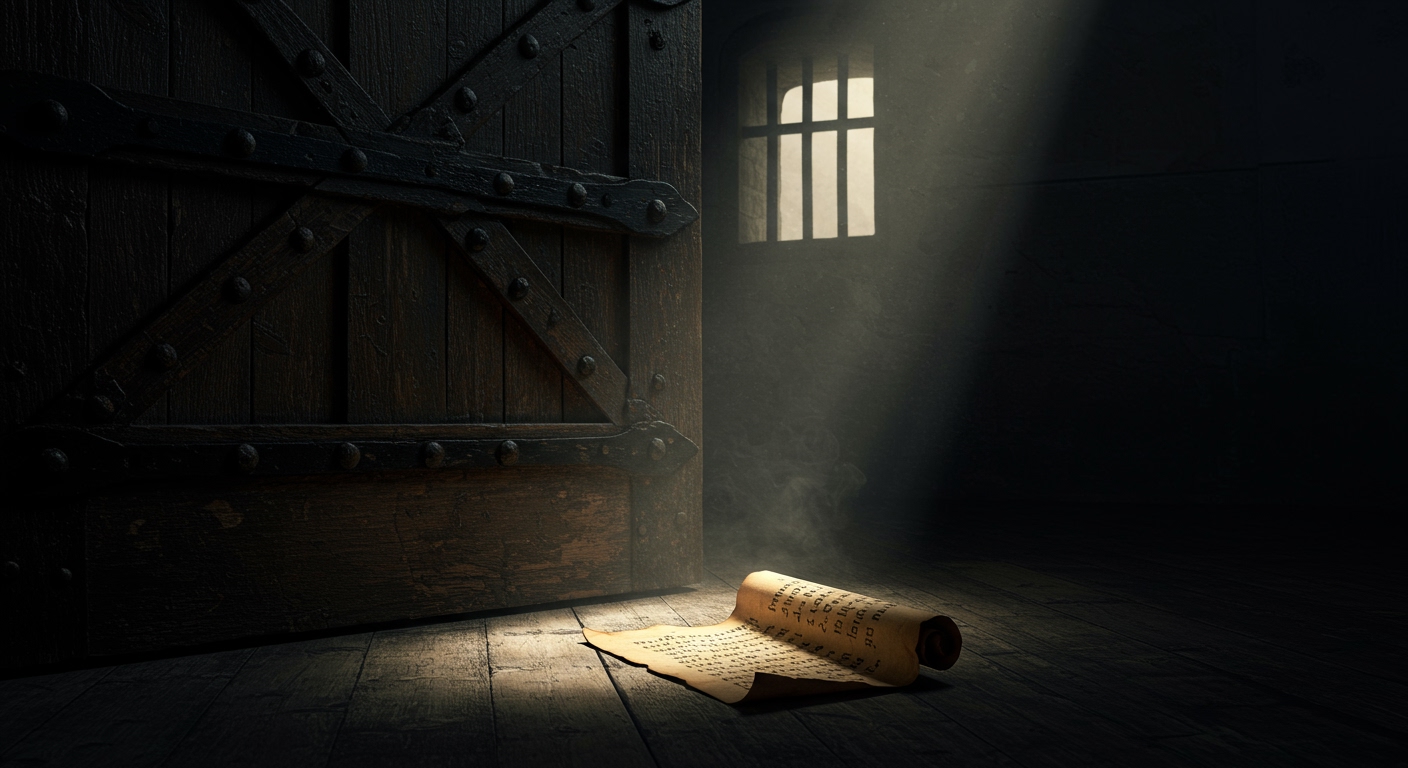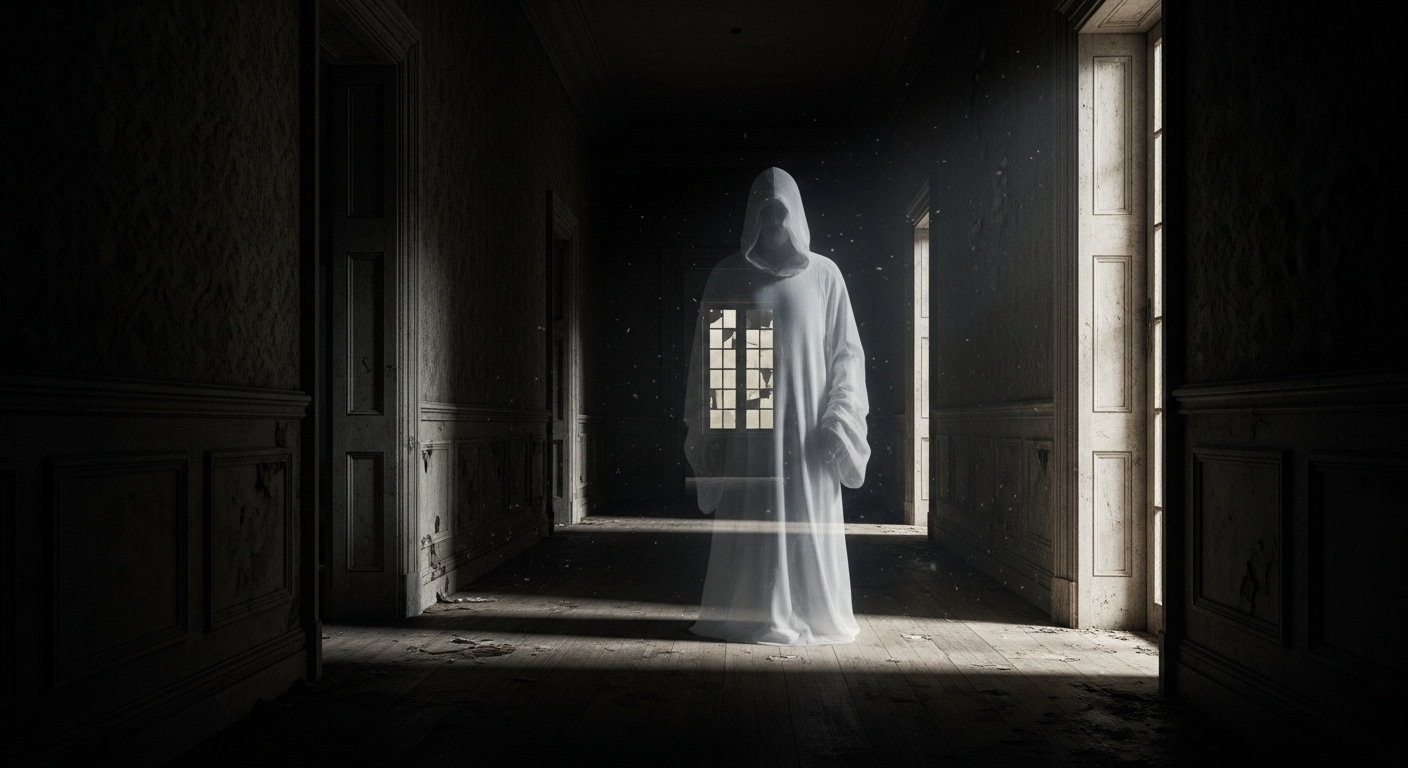Catholic convents, for centuries, served as havens of spiritual devotion, intellectual pursuit, and sometimes, a refuge for women. Yet, behind their hallowed walls often lay a darker, more complex reality: the pervasive abuse of power in Catholic convents historical cases. This sensitive topic reveals a long and intricate history of mistreatment, exploitation, and profound suffering. From the hierarchical structures that fostered unchecked authority to a deeply ingrained culture of silence and patriarchal control, these abuses impacted countless nuns across diverse centuries and continents, leaving an indelible mark on individuals and the institution alike.
II. Historical Context and Evolution of Convents
A. Early Medieval Period (5th-11th Centuries)
In the Early Medieval Period, Catholic convents often served as critical institutions for women. They offered avenues for spiritual devotion, education, and even a degree of autonomy, providing refuge from societal pressures like forced marriages or economic hardship. However, this era also highlighted the profound vulnerability of nuns to external threats. During periods of invasion by groups such as the Vikings, Magyars, and Saracens, convents were frequently targets of violence, rape, and plunder. The existence of strict laws imposing heavier penalties for harm against consecrated virgins underscores a contemporary awareness of their precarious position.
B. High and Late Middle Ages (12th-15th Centuries)
As centuries progressed into the High and Late Middle Ages, the dynamics within convent walls became more intricate. Abbesses, often from noble families, wielded significant authority, managing extensive properties, collecting rents, and cultivating vital political connections. While many exercised their power responsibly, there were documented instances where this authority led to abuse of power in Catholic convents historical cases for personal gain or control. Examples include favoritism, nepotism, and the accumulation of personal wealth, contributing to internal convent exploitation. This period also saw instances of forbidden relationships, including secret affairs involving priests, lay brothers, or other nuns, which, if discovered, were met with severe punishments. The controversial practice of some convents selling indulgences further complicated their moral landscape, intertwining spiritual practice with financial corruption.

C. Pre-Vatican II Era (Early 20th Century up to 1960s)
The Pre-Vatican II era brought forth a period characterized by highly rigid hierarchies and authoritarian structures within Catholic convents. A significant emphasis was placed on unquestioning obedience, self-sacrifice, and a controversial practice often described as “breaking the spirit” of new entrants. This intense environment frequently led to severe emotional deprivation, social isolation, and significant psychological problems for many nuns. Disturbingly, there are documented cases of children and young girls entering convents at a very tender age with little to no understanding of their vows, making them highly susceptible to manipulation and, in some instances, outright brainwashing.
D. Post-Vatican II Era to Present (1960s onwards)
The Second Vatican Council (Vatican II) in the 1960s initiated a period of gradual reform, leading to increased autonomy, personal responsibility, and greater interaction with the outside world for nuns. However, despite these changes, reports of nuns mistreatment and exploitation have persisted, gaining significant public attention with the rise of movements like “Me Too” and “Nuns Too.” A pivotal moment came in 2019 when Pope Francis explicitly acknowledged the grave issue of sexual abuse and even “sexual slavery” of nuns by priests and bishops, marking a significant, albeit delayed, recognition of this deep-seated problem within the Church.
III. Forms of Abuse of Power in Convents
A. Sexual Abuse
Perhaps the most disturbing manifestation of abuse of power in Catholic convents historical cases is sexual abuse. This abuse took various forms and spanned decades and continents, affecting countless nuns.
By Priests and Bishops:
There is a grim, decades-long history of sexual pressure, groping, kissing, and repeated rapes perpetrated by priests and bishops against nuns across Asia, Europe, South America, Africa, and the US1. Often, nuns were exploited not just for sexual acts but also for unpaid labor, frequently serving as “housekeepers” for clerics. Horrifyingly, there are documented cases where nuns were coerced into abortions or forced to give birth to the children of their abusers, who were priests or bishops. “Quid pro quo” situations, where sexual demands were made in exchange for recommendations or career advancement within the Church, further highlight the deep imbalance of power.
By Fellow Nuns and Superiors:
The abuse was not exclusively external; documented instances of sexual exploitation by other nuns and superiors also exist. This could involve “grooming” behaviors, where positions of authority were leveraged to manipulate and exploit younger or more vulnerable nuns.

B. Physical Abuse
Physical abuse was another harrowing reality within some religious institutions. Particularly in industrial schools and orphanages run by religious orders in places like Ireland and Australia, severe corporal punishment was common. This included punching, slapping, and even flogging, often inflicted by nuns themselves against residents and, in some dire instances, against other nuns.
C. Emotional and Psychological Abuse
The emotional and psychological toll of nuns mistreatment cannot be overstated. Young entrants were frequently subjected to brainwashing, manipulation, and intense “mind control” tactics. The imposition of “unquestioning acceptance” and the deliberate suppression of individual will were common, designed to foster absolute obedience. Social isolation and emotional deprivation were widespread, contributing significantly to mental strain, breakdowns, and a pervasive environment of fear and self-doubt, often exacerbated by constant reproach for appearance or behavior.
D. Economic and Labor Exploitation
Economic and labor exploitation formed another layer of abuse. Nuns often performed extensive secretarial work, translations, and domestic duties for the Church or affiliated institutions, receiving no promotion, credit, or fair compensation for their invaluable contributions. This included instances of misappropriation of funds, sometimes linked to the sale of indulgences, further illustrating convent exploitation as a systemic issue.
IV. Factors Contributing to Abuse and Cover-ups
Understanding the widespread nature of historical abuse in convents requires examining the systemic factors that enabled and perpetuated it.
A. Hierarchical Structure and Clerical Patriarchy
At the core of the problem lies the deeply entrenched hierarchical structure and a pervasive clerical patriarchy. Unchecked clerical power has been identified as a fundamental root cause of abuse, not only against minors but significantly against nuns. Historically, a “superpower” perception of priestly celibacy, particularly in the Middle Ages, elevated clerics to a status perceived as “above and purer than lay people”2. This perception, coupled with a strong patriarchal culture, systematically prevented women from gaining substantive power or having their voices heard within the Church. Furthermore, the economic and administrative dependence of smaller diocesan congregations on local bishops created severe conflicts of interest, making it incredibly difficult to report clerical abuse of nuns effectively.
B. Culture of Silence and Secrecy
A deeply ingrained culture of silence and secrecy proved to be a formidable barrier to justice. For centuries, a historical policy prioritized avoiding scandal to preserve the Church’s reputation, often tragically at the expense of victims. Nuns lived in profound fear of repercussions for reporting abuse, including expulsion from their order or even the threat of “damnation.” This fear was compounded by internal cover-ups, where Church authorities frequently moved abusers to different locations instead of addressing the crimes. Victim shaming and guilt also made it immensely difficult for individuals to come forward, trapping them in their suffering.
C. Vulnerability of Nuns
The inherent vulnerability of nuns was a critical contributing factor. Many women entered convents at a very young age—some as young as 15 or 16—making them highly susceptible to manipulation. Their vow of obedience to superiors, a cornerstone of religious life, made resistance challenging, if not impossible. Economic and social dependence on the convent and the broader Church left them with few alternatives, while their isolation from the outside world severely limited their avenues for seeking help or support.

V. Notable Historical Cases and Eras
A look at specific historical abuse in convents highlights the pervasive nature of these power dynamics across different periods.
A. Medieval Period
- Abbey of Fontevraud (France): This prominent abbey is often cited as a critical case study for understanding the complex abuse of power in Catholic convents historical cases, revealing internal struggles and deviations from religious ideals.
- The Nun of Watton (12th Century England): A tragic account details a nun coerced into convent life who subsequently became involved with a lay brother, ultimately facing brutal and severe punishment, underscoring the harsh realities and controls imposed upon women.
- Convent of Santa María de las Huelgas, Burgos (12th-13th Century Spain): This influential convent witnessed significant internal power struggles and accusations of favoritism, particularly against mother superiors from noble families, illustrating how social status could influence internal politics and contribute to nuns mistreatment.
B. Industrial Schools and Orphanages (19th-20th Centuries)
The 19th and 20th centuries brought to light extensive abuse within institutions run by religious orders, often targeting children and vulnerable individuals.
- Sisters of Mercy (Ireland): Numerous allegations of physical, emotional, and sexual abuse emerged from institutions like St. Vincent’s Industrial School, Goldenbridge, operated by this order.
- St. Joseph’s Orphanage, Neerkol (Australia): Disturbing reports detailed sexual and physical abuse perpetrated by both priests and nuns within this orphanage.
- Mount Cashel Orphanage (Canada): This case became infamous for the widespread physical and sexual abuse inflicted by Christian Brothers, further compounded by government, police, and church collusion in extensive cover-ups3.
- Nazareth House (Scotland): Allegations included violent discipline and sexual abuse by a priest, highlighting the pervasive nature of abuse across different religious-run institutions.
C. Modern Era (Late 20th and 21st Centuries)
The modern era has seen increased revelations, often fueled by survivors’ courage and global movements.
- Cases in India: Shocking reports include a bishop accused of repeatedly raping a nun and another nun murdered after witnessing inappropriate relations, starkly revealing ongoing clerical abuse of nuns.
- Germany: A comprehensive report uncovered thousands of children, teenagers, and wards abused by clergy, monks, and nuns between 1946 and 2014, illustrating the systemic failures across various religious institutions.
- United States: Following grand jury reports detailing priestly abuse, allegations against nuns have also gained frequency post-#MeToo, involving figures like Sister Judith Fisher and other Franciscan and Holy Family of Nazareth sisters.
- Theodore McCarrick: This high-profile case involved a cardinal found guilty of sexual crimes and severe abuse of power against both adults and minors, ultimately leading to his dismissal from the clergy, further underlining the critical need for church accountability abuse.
- Marcial Maciel (Legion of Christ, Mexico): A deeply disturbing case involving the founder who sexually abused minors and fathered children, marked by decades of denial and extensive cover-ups.

VI. Impact on Survivors
The profound impact of abuse of power in Catholic convents historical cases on survivors is a testament to the devastating and long-lasting nature of such experiences.
A. Psychological and Emotional Trauma
Survivors often endure severe psychological and emotional trauma, stemming from prolonged “grooming,” “mind control,” and “infantilisation” tactics. These experiences leave deep scars, fostering pervasive feelings of shame, guilt, and profound isolation. Many victims experienced mental breakdowns or resorted to desperate acts like hunger strikes as cries for help. For many, the recognition and arduous process of healing from nuns mistreatment are significantly delayed, sometimes for decades, as exemplified by the experiences of individuals like Anne Gleeson and Marya Dantzer.
B. Challenges in Post-Convent Life
Leaving the convent, even if it means escaping abuse, often presents a new set of formidable challenges. Survivors frequently struggle immensely with adjusting to secular life—mentally, socially, emotionally, and financially. The lack of adequate support systems for their transition out of religious life exacerbates these difficulties. Furthermore, many grapple with a profound loss of faith, struggling to reconcile their deeply personal and often traumatic experiences with their former religious beliefs, compounding their journey toward healing.

VII. Calls for Reform and Ongoing Challenges
In response to the undeniable legacy of abuse of power in Catholic convents historical cases, there have been growing calls for reform, though significant challenges remain in achieving full justice and accountability.
A. Vatican’s Acknowledgments and Actions
A crucial step forward came in 2019 when Pope Francis publicly confessed to the abuse of nuns by priests, a significant acknowledgment from the highest levels of the Church. Earlier, in 2017, the Vatican issued guidelines explicitly recognizing abuse of power within women’s religious institutes. These acknowledgments have been accompanied by actions such as the suspension and removal of clerics found to be involved in abuse, indicating a shift, albeit slow, towards greater internal accountability.
B. Role of Advocacy and Awareness
The “Me Too” and “Nuns Too” movements have been instrumental in empowering survivors to break their silence and share their stories, forcing a global reckoning. Publications like the Vatican magazine “Donne Chiesa Mondo” (Women Church World) have bravely published articles exposing abuse and exploitation, further raising awareness within and outside Church circles. Advocacy groups such as the Survivors Network of those Abused by Priests (SNAP) have also played a vital role in supporting victims of abuse perpetrated by both clergy and nuns, pushing for greater church accountability abuse.
C. Systemic Reforms Needed
Despite these developments, profound systemic reforms are still urgently needed. These include calls for increased transparency and robust accountability mechanisms for all Church officials, along with crucial protections for whistleblowers within religious orders. There is a strong demand for fair compensation for abused nuns who were forced to leave their vocations or suffered severe physical and mental abuse. Many advocates argue that investigations of abuse should be transferred from internal Church authorities to independent secular authorities to ensure impartiality. Ultimately, true reform also necessitates greater representation and voting privileges for women at Vatican meetings, addressing the deep-seated patriarchal structures that historically enabled much of the abuse.
VIII. Conclusion
The historical record reveals a pervasive and deeply troubling pattern of abuse of power in Catholic convents historical cases. From the complex power dynamics of the Middle Ages to the rigid hierarchies of the 20th century and the ongoing revelations of the modern era, nuns mistreatment has manifested in horrific forms, including sexual, physical, emotional, psychological, and economic exploitation. The profound impact on countless individuals, coupled with the erosion of trust within the institution, underscores a painful chapter in Church history. While steps towards acknowledgment and reform have been made, the struggle for true justice, comprehensive accountability, and systemic change continues. Only through continued historical examination, transparency, and the unwavering empowerment of survivors can the Church hope to prevent such abuses from recurring and truly heal from its past. END
References
- “Vatican magazine highlights sexual abuse of nuns by priests,” The Guardian
- “The Status of the Clergy in the Middle Ages,” Medievalists.net
- “Mount Cashel: How a Newfoundland orphanage became a symbol of abuse,” CBC News



